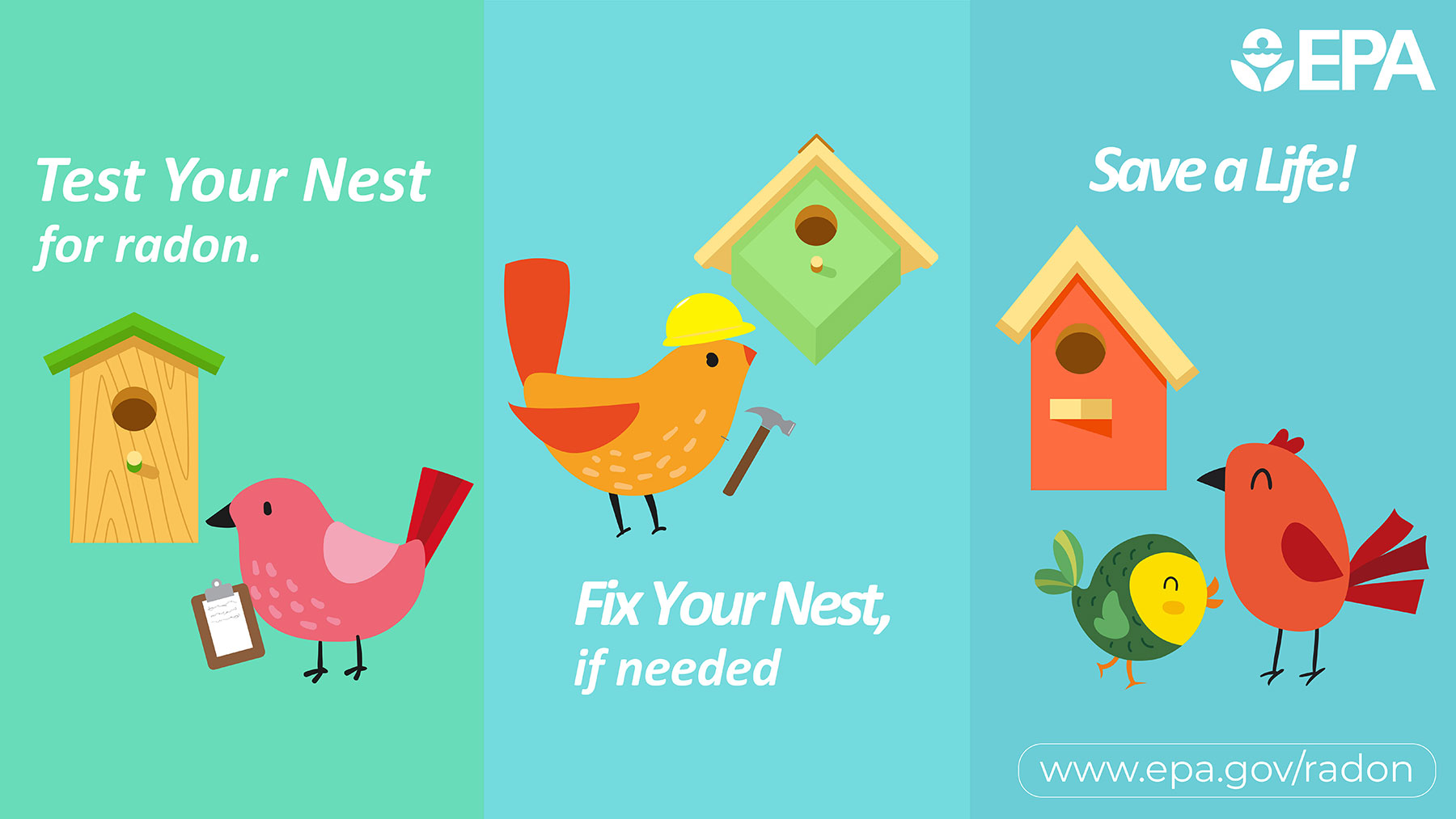January is National Radon Action Month, and the U.S. Environmental Protection Agency (EPA) is working with our partners to spread the word about radon health risks in homes, the importance of testing, and steps homeowners can take to reduce risk in the Rocky Mountain and Great Plains states of Colorado, Montana, North Dakota, South Dakota, Utah, and Wyoming.
Radon is a known carcinogen and is estimated to cause more than 20,000 lung cancer deaths each year in the U.S. In fact, the colorless, odorless gas is the leading cause of lung cancer in nonsmokers. The good news is the health risks and impacts are preventable — testing and reducing radon levels in your home, and saving lives, is easy.
This year’s Call to Action, “Test Your Nest!” is especially important to our region’s residents as large portions of these states are at risk for high indoor radon levels that can cause lung cancer. The best way to protect against radon is to perform a simple, low-cost test of your home. EPA recommends homeowners take action to reduce radon levels when they exceed the action level of 4.0 picocuries per liter (or 4pCi/L).
Map of Radon Zones in the United States
“Understanding your home’s radon levels is one of the most important steps you can take to protect you and your family’s health,” said EPA Regional Administrator KC Becker. “I encourage you to take some time to check your nest this winter, so you can be sure that quality time spent inside with friends and loved ones is not just comfortable, but safe.”
Want to learn more? The information and resources below can help.
Things You Can Do
- Learn the basics – Visit EPA’s Radon website for a wide range of information, including free radon publications.
- Test your home – EPA and the U.S. Surgeon General recommend that all homes in the U.S. be tested for radon. Learn more about testing your home, including how to obtain an easy-to-use test kit.
- Fix your home if needed – Should your test results come back elevated, EPA recommends hiring a certified radon mitigation specialist to install a mitigation system that will prevent radon from entering your home. Read about ways to reduce radon in your home in EPA’s “Consumer’s Guide to Radon Reduction.”
- Spread the word – Check out Media Resources here and share infographics on social media and around your community to help get the word out about the importance of radon testing. Tell your family and friends about the health risk of radon.
- Building a new home? Make it radon resistant. Read more about radon-resistant new construction, “Building Radon Out: A Step-by-Step Guide to Build Radon-Resistant Homes.”
STATE-by-STATE INFO for EPA Region 8
COLORADO Radon Fast Facts
- Half of all homes in Colorado have high radon levels.
- Living in a home with Colorado’s average level of radon (6.4pCi/L) is like having 200 chest x-rays each year.
- Approximately 500 people in Colorado die every year from lung cancer caused by radon exposure.
- Colorado has a low-income radon mitigation assistance (LIRMA) program that can pay for radon mitigation if eligibility requirements are met: www.coloradoradon.info.
COLORADO Radon Experts
- Chrystine Kelley: Radon Program Manager, Colorado Department of Public Health & Environment, 303-692-3442, chrys.kelley@state.co.us
- Patty Dooley-Strappelli: Boulder County Public Health, www.radonawarecolorado.org, 303-441-1560, pdooley-strappelli@bouldercounty.org
- Heidi Nafman Onda: Radon-induced lung cancer survivor, radon awareness advocate, 303-594-4787, nafonda@comcast.net
- Sally A. Madden: Radon-induced lung cancer survivor, radon awareness advocate, 303-807-6438, smadden@wlgore.com

